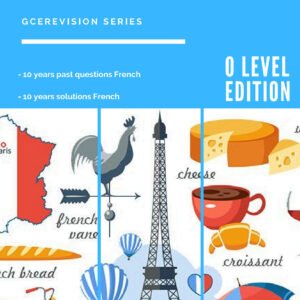1.7. TRANSPIRATION
Transpiration is the diffusion of water molecules in the form of vapor from the leaf to the atmosphere.
Transpiration may be t stomata (through stomata) or lenticular (through the lenticels) or cuticle (through the cuticle).
Soil water enters the plant through root hairs by osmosis and the water is carried up by the xylem to the leaf by root pressure and suction pressure.
The water is distributed to the spongy mesophyll and palisade mesophyll cells by diffusion through the xylem.
Some water evaporates in the intercellular air space of the spongy mesophyll cells of the leaf and they diffused through the stomata into the atmosphere.
When the guard cell is turgid, the stomata opens and this is general during the day. When the guard cell is turgid, the stomata closes and this is generally during the night.
Diagram to demonstrate transpiration in plant.:

An instrument uses for measuring the water obtain during transpiration is called a potometer. The instrument can be used to compare the rate of transpiration of different plant under different conditions or under the same condition.
Diagram of a potometer.

1.7.1 USE OF A POTOMETER.
A potometer is made up of a bottle with wide mouth carrying cork with three holes. In these holes are fitted a dropping funnel with a tap. The stem of a freshly cut shoot, and a long bent capillary tube which is attached to a graduated scale.
The bottle is filled with colored water from the funnel up to the funnel level up to this time the tap of the funnel is opened to let water fill the capillary tube, and the tap of the funnel is closed.
While transpiration is going on the volume of water in the bottle will decrease and the water in the capillary tube is also taken up so that the air bubble will move backward.
The amount of water transpired can be noted by reading the graduated scale. Sometimes it is the funnel which is graduated. If the experiment is carried out over a period of time, the rate of transpiration can be calculated also if the diameter of the glass tube is known the volume of water transpired can be calculated.
1.7.2. CONDITIONS AFFECTING THE RATE OF TRANSPIRATION.
- Size of leaf and number of stomata:
When the leaf is large there is more transpiration because it contains more stomata than smaller leaf. Also, when a stoma is full open (during the day) there is more transpiration than when it is closed at night.
- Humidity:
When the atmosphere is full of water vapor, the plant cannot send out any more water vapor into the atmosphere. Therefore, transpiration take place more when the atmosphere is dry (when the humidity is low).
- TEMPERATURE
When the temperature is high more water diffuse out of the leaf into the atmosphere and transpiration rate is high. At low temperature less water will be evaporated from the leaf into the atmosphere and transpiration rate will be low.
- LIGHT
During the day, the stomata is open and more water diffuses through the leaf to the atmosphere than the night when the stomata is closed
- WIND
On a windy day, more water is swept off the surface of the leaf by the wind and this increases the transpiration rate more than on a day when the air is stilled
- SOIL WATER
The amount of water in the soil affect the rate of transpiration when there is more water in the soil plants take up more of the water and transpire more when there is less water in the soil.
1.7.3. EXPERIMENT TO SHOW THAT VAPOR IS GIVEN OFF DURING TRANSPIRATION
Aim:
Experiment to show that water vapor is given off during transpiration.
Requirements:
A potted plant, a transparent polythene band, a piece of string.
Procedure:
A potted plant is enclosed in a transparent band and the band is tied around based of the plant. The experiment is allowed for a few days.
Diagram:

Results:
After a few days, water vapor saturates the air in the bag and drops of water from inside the bag. The bag is removed and shaken and all the water is placed into the container and tested.
Conclusion:
This shows that plants exert suction pressure.
1.7.3.1. TEST FOR WATER
when water is poured over dry white anhydrous cu2so4 it becomes blue.
1.7.4. EXPERIMENT TO COMPARE THE TRANSPIRATION RATE OF TWO SURFACE OF A LEAF.
Aim:
Experiment to compare the rate of transpiration of the two surfaces of a leaf.
Requirements:
Blue dry cobalt chloride paper, transparent sellotape.
Procedure:
Dry cobalt chloride paper in the presence of water will change from blue to pink. Two equal pieces of blue dry cobalt chloride paper are place, one on the upper surface of the leaf and one on the lower surface of the leaf and both are held in place by transparent sellotape. The experiment is allowed to stay in the sun for a few ours
Diagram:

Results:
After a few hours a cobalt chloride begins to turn pink from blue. The time take for cobalt chloride paper on the upper surface to turn completely pink is longer than the time taken by the paper on the lower surface to turn pink.
Explanation:
Since it took the paper on the lower surface to turn pink faster, this is because there are more stomata on the lower surface than the upper surface carrying out transpiration
Conclusion:
This shows that there is more transpiration on the lower surface.
click here for the next lesson: TRANSLOCATION










